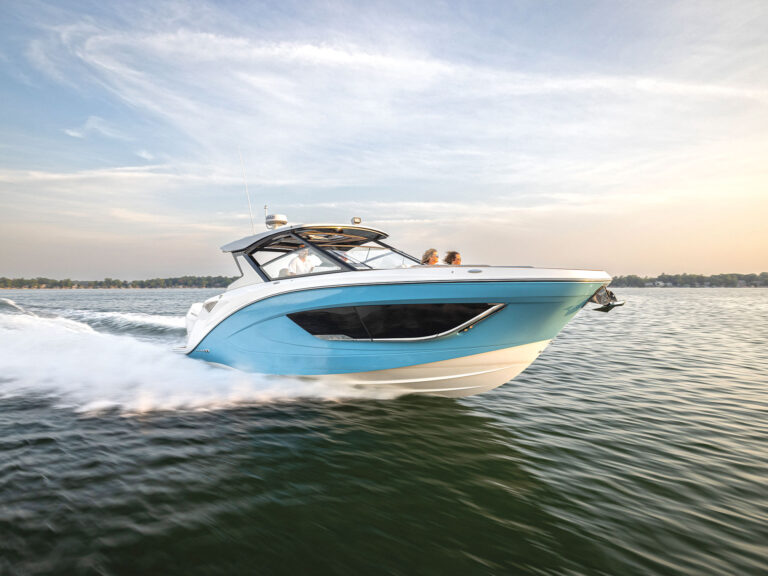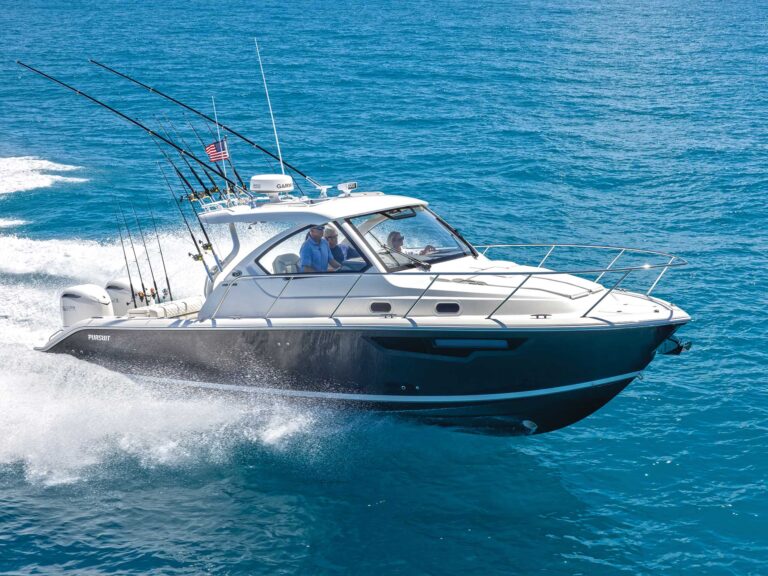You’re standing in the store, staring blankly at a hodgepodge of marine electronics. Trying to woo you and instill you with confidence, the packages scream “rugged,” “weather-proof,” “splashproof,” and yada, yada, yada. You make your choice, certain that once you install this baby, your life on the water will be sunshine and lollipops.
Not so fast, buddy. Poor installation practices can do a real number on your electronic equipment. For this very reason, we interviewed those harried tech support shock troops who work for the major electronics manufacturers to find out how their customers commonly cook their electronic units. We got a useful list of dos and taboos that may just keep you from being stuck up a cyber creek without a virtual paddle.
1. Too Much Juice: The most common situation that ruins electronic devices occurs when you install units directly to your boat’s electrical power. Regardless of whether you’re hooking up a GPS, autopilot, depthsounder, or radar, if you wire in too much power, say 24 volts to a device that’s only designed to accept 12, you can quickly end up with Kentucky Fried electronics. To avoid such a disaster, check the power requirements listed in the owner’s manual or on the label on the device itself, and then double-check your wiring. Also, take care not to reverse the polarity. Normally, red is positive and black is negative, but there are exceptions so check the manual.
Most units are designed to accept a range of incoming voltages and have built-in protection, usually a replaceable fuse, to shield them from excess power. So if you connect too much voltage to your electronics or reverse the polarity, the device’s over-voltage protection may stop any damage, but the unit won’t turn on. Rewire the power, replace the fuse, and try again.
If a black cloud has been hovering over you and the device is not circuit protected, you may hear a crackling sound or see smoke rising out of the case. If it looks and smells like burnt cheese, it probably is. In this case, you will need to send it back to the manufacturer for repair.
Tech support experts from the companies that we interviewed all had stories of customers incorrectly wiring devices. In most cases, the fuses stopped any harm. However, some customers, who were in too much of a hurry, bypassed the fuse. Can you spell Z-A-P? So in addition to checking your wiring and power source, never bypass a device’s built-in protection.
2. Got Your Wires Crossed? Most electronic devices come with connectors and cables, a bundle of colored wires inside a common insulator, that you connect to your boat’s power and other electronics. Two of the wires connect to power. Others connect to NMEA ports, allowing the device to share information with other units. Still others connect to transducers, alarms, and external speakers. Mix these wires up, and you may send direct power to a portion of the device that’s not meant to handle the surge. The end result is that your unit won’t work, and you’ll probably have to return it to the manufacturer for repair. Studying the manual’s schematic will go a long way.
3. Doing the Battery Twist: If you use a portable electronic device, say a handheld GPS receiver, it undoubtedly uses batteries. Even panel? or deck-mounted electronic devices likely have internal batteries that maintain memory and let you use the device if the boat’s power fails. Even though you’ve been installing batteries since you were a kid, not paying attention can spell trouble. A common error is to install them upside down. Most devices have a label or an imprint that shows you which way the batteries go in. Look carefully, those images are often tiny and faint. Reverse the directions of all the batteries and you reverse the polarity. How can this cause damage? The more batteries you incorrectly install, the greater the voltage you empower the device with. It’s the same as reversing polarity on an installed device: Your unit may not turn on, may blow its power protection, or may end up as smoking scrap. One tech support rep told us that reversing the batteries can cause batteries to leak or explode. Leakage can cause corrosion, preventing new batteries from making a connection.
By the way, there’s a reason manufacturers recommend alkaline batteries. They do a better job of letting a device shut down under low-battery conditions. Cheaper batteries may lack the voltage to let a device save information before turning off.
4. What Leaks Out: Most manufacturers tell you to remove the batteries from a portable device when storing it for a long period of time. Why? Batteries corrode. Remember that flashlight you once had – where the batteries began to look like moldy bread? The same thing can happen to your boat’s electronics, which cost a lot more than a five-and-dime flashlight. In most cases, the gunk that leaks from the batteries gets all over the contacts in the battery compartment, causing them to corrode and no longer make adequate contact with the battery. Batteries can also leak into the compartment where the circuitry is located. If you’re wondering how this could occur with a waterproof device, remember that the batteries might be inside a watertight compartment right next to the stuff that makes the device tick. Also, if you install backup batteries, replace them according to the manual’s schedule. Forget, and all your waypoints could be lost during storage.
5. Any Way You Splice It: Another installation hazard occurs whenever you cut and splice cables or wires. Manufacturers try to be generous and give you more cable than you need to run to an external antenna or transducer. However, when you have 50 feet of cable that has to run only 10 feet, your first inclination is probably to cut and splice it. Wrong. GPS cables, for instance, require the impedance provided by the long cable. Cut it and your unit’s sensitivity will be diminished. Coil long cables whenever possible. There are also those of you who don’t want to cut a big hole in the deck to run a bulky connector through, when a hole the size of the cable will do. You can clip the connector, run the wire, and then reinstall the connector. But, many cables, particularly coaxial ones for antennas and transducers, require advanced splicing techniques.
Any time you cut a cable, you expose its inner workings to the elements – particularly moisture – which can lead to internal corrosion. Even worse, you can short the wires in the cable when you put it back together, which can cause the antenna or transducer to malfunction. Even if you make a successful splice, you may change the impedance characteristics. In other words, the length of the cable is designed to help a device work optimally and changing its length may affect the performance.
GPS manufacturers who provide their customers with antennas that are powered (“active”) run into cable length issues all the time. Because of aesthetics or space considerations, customers often cut their wires and don’t put them back together correctly. The result is shorts. In some cases, the lucky customer can simply purchase another cable from the manufacturer. In other cases, depending on the unit, the short or miswiring can damage either the antenna or the receiver, or both.
6. Too Close for Comfort: It’s not uncommon for the antenna of one device to interfere with the antenna of another, particularly when they’re in close proximity. For example, a radar’s antenna can interfere with the operation of a radio and that of a GPS receiver. Generally, if two products operate at or near the same frequency, interference is likely. To minimize that risk, be sure to give each antenna as much room as you can. Also, route the cable from each device through different paths. For example, if the cables from devices come down into your nav station, try running them in from opposite sides. Although interference won’t cause permanent harm to electronics, one device can make another inoperable. What did tech support report? GPS receivers and older loran receivers are often susceptible to radar interference. To avoid this, check the radar’s manual for its beam-width angle and mount the other antenna above the radome and out of the imaginary lines this angle describes.
7. Easy Does It: When connecting cables, there’s no reason to be Conan the Barbarian. Forcing connectors together with all your might can bend their pins, which means the connectors will have trouble mating. You’ll have to manually bend the pins back. At worst, bent pins can touch and short out the device or cause wrong connections to be made. Our tech support reps revealed that the more pins in a connector, the thinner the individual wires and the more likely that they’ll be mangled if they’re roughly put together. Of course, the thinner the wires, the easier it is to bend them back. The downside? The more wires, the more complex the connector. If you bend the pins in a connector, you can often bend them back (gently) using needle-nose pliers or tweezers. Be sure to disconnect power before you attempt this. But the best thing to do is make sure that pins don’t become bent in the first place.
8. Pull the Plug: Connections can short when changes are made to them while devices are operating. If you turn on your portable GPS to obtain fixes, activate the plotter to bring up a local chart, and then connect the two together while they’re both on, you risk harming one or both units. Also, when you remove a connector, you risk letting pins make contact with a connection that shouldn’t occur and accidentally surge power through a line that’s meant to accept data. One company told us about a user who connected a running GPS receiver to a running plotter, damaging a component in the plotter so that it no longer displayed charts accurately. The plotter manufacturer had to replace an entire circuit board.
9. It’s All Well: That electronic device may say “waterproof” and it may even float if it’s dropped, but there’s no reason to put those claims to the test. Splashproof implies a device may be splashed with water and it won’t let water leak into it. Waterproof means a unit may be submerged underwater to a certain depth and it won’t allow water inside its housing. Even though a device is labeled waterproof, if you place it in an environment where it’s constantly exposed to the elements, something is bound to happen. Battery contacts may corrode. And water can seep into the circuitry compartment and damage components. Electronics manufacturers love to tout anecdotes about how their devices were accidentally tossed overboard and left submerged for days and still worked. This does happen. Nevertheless, keep your gear as dry as possible.
10. Wet Behind the Ears: If water ever gets into your unit, don’t turn it on immediately. In severe cases, you can simply shake the unit and hear the water sloshing inside. Water inside a unit can cause the electronics to short. In this case, it’s best to contact the manufacturer for instructions. And if you can’t reach the vendor, wait until the unit has dried out before turning it on.
11. Waylay in Transmission: Some devices, such as GPS receivers and chartplotters, let you upload and download waypoints and other data to and from a PC. Whenever you have an electronic device connected to a computer to transfer information, don’t interrupt the session. At best, an interruption will stop the session, and both the PC and electronic device will be fine. At worst, the electronic device may lose memory. The solution depends on the unit itself. Some can receive data through a PC to ensure that the device has the information it needs to operate. Others may have chips that will need to be replaced, requiring that the device be sent to its manufacturer. Always let a unit finish its uploads and downloads.
12. Not Any Port in a Storm: When connecting an electronic device to a PC, deactivate any software that uses the same port (usually the serial, COM1, or COM2 ports). A program for uploading and downloading waypoints often has its own configuration screen that lets you set the port and activate and deactivate any conflicting software. By separating the device or program that operates on each port, you ensure that the software won’t send a strange code the electronic device isn’t looking for. If the device receives erroneous information, for example, waypoints may become illogical locations, or worse, it may erase the memory.
13. You Know This Stuff: Don’t eschew those directions! As usual, reading the user’s guide and heeding its instructions will help you avert most disasters. You’ve paid serious money for that piece of electronics and dream of convenience, too. So get serious about how you install and use it.









